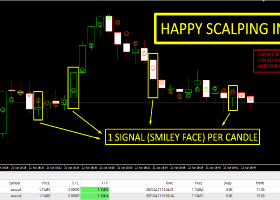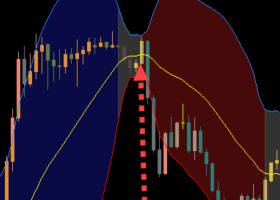Analyzing the Pros and Cons of Limiting an EA to Single Trades at a Time
In algorithmic trading, the decision to allow an expert advisor (EA) to open only one trade at a time has significant implications for its functionality, performance, and optimization. While this approach simplifies certain aspects of the trading logic, it introduces unique trade-offs that can influence both live trading and backtesting results. Here, we explore the advantages, disadvantages, and effects of this strategy on backtesting optimization.
Pros of Single Trade Limitation
1. Simplified Risk Management
When an EA is restricted to one trade at a time, managing risks such as drawdowns and margin requirements becomes more straightforward. Traders can easily calculate their maximum exposure, ensuring that their trading account remains within acceptable risk parameters.
2. Reduced Complexity in Logic
By limiting trades to one at a time, the logic required to manage multiple positions, such as position sizing, scaling in or out, or hedging, is eliminated. This reduces the likelihood of bugs and simplifies code maintenance.
3. Minimized Overtrading
Overtrading is a common pitfall in algorithmic strategies, particularly when the EA reacts impulsively to every chart pattern or signal. A single-trade restriction forces the EA to be more selective, reducing the risk of entering low-quality trades.
4. Controlled Execution in Trending Markets
In trending markets, entering one trade at a time can prevent excessive exposure. It allows the EA to focus on capitalizing on the initial entry without getting "whipsawed" by minor retracements.
Cons of Single Trade Limitation
1. Missed Opportunities
A significant downside of this approach is the potential to ignore subsequent high-quality trading signals. For instance, if a clear trend reversal or continuation pattern emerges while the EA is managing an existing position, these opportunities are forfeited.
2. Suboptimal Performance in Sideways Markets
In a range-bound or choppy market, limiting the EA to a single trade can hinder its ability to adapt. Missing opportunities to trade both sides of the range may result in underperformance compared to strategies that allow multiple trades.
3. Reduced Strategy Diversification
Allowing multiple trades enables diversification within the EA’s strategy, such as trading different timeframes or setups concurrently. A single-trade limitation reduces this diversification, potentially impacting the overall profitability and robustness of the system.
4. Extended Recovery Time
If the single trade results in a loss, the recovery time may be extended since the EA must wait until the current trade is closed before reacting to new signals. This delay can lead to prolonged drawdowns during volatile market conditions.
Effects on Backtesting and Optimization
1. Simpler Optimization Process
Backtesting and optimization of an EA with a single-trade limitation are generally faster and simpler. With fewer variables related to position management, the computational load is reduced, making it easier to fine-tune parameters.
2. Overfitting Risks
The single-trade constraint can inadvertently lead to overfitting during backtesting. The EA might show impressive results in certain market conditions, but its inability to react to subsequent patterns may render it less adaptable in live trading.
3. Reduced Accuracy in Representing Market Conditions
Markets often present overlapping opportunities. By restricting the EA to one trade, backtesting results may not fully reflect the EA’s potential in live conditions, particularly in markets with frequent trend reversals or continuation patterns.
4. Skewed Performance Metrics
The single-trade limitation can influence key performance metrics such as the profit factor, maximum drawdown, and win rate. For example, the EA might show a higher win rate but with lower total profitability due to missed opportunities.
Conclusion
Restricting an EA to one trade at a time offers clear benefits, such as simplified risk management and reduced complexity. However, these advantages come at the cost of potentially missing lucrative opportunities and reduced adaptability in dynamic markets. For traders considering this approach, it is essential to weigh these trade-offs carefully and evaluate the EA’s performance across a range of market conditions during backtesting.
To mitigate some of the drawbacks, traders can explore hybrid approaches, such as introducing logic to re-enter trades if subsequent signals align with the current position’s direction. Ultimately, the decision to enforce a single-trade rule should align with the trader’s overall strategy, risk tolerance, and market objectives.
For more trading resources, visit my profile https://www.mql5.com/en/users/doshur


